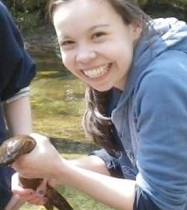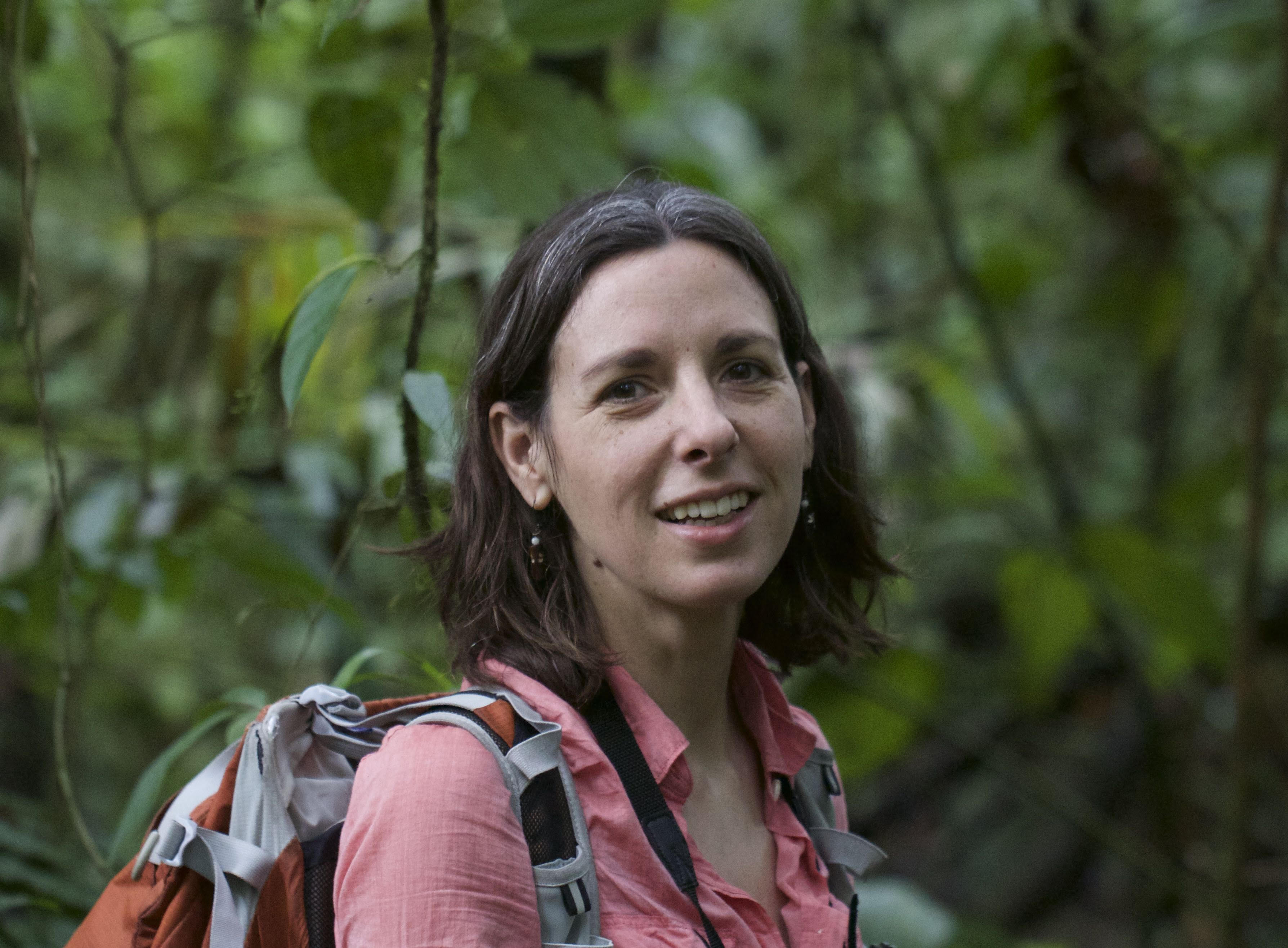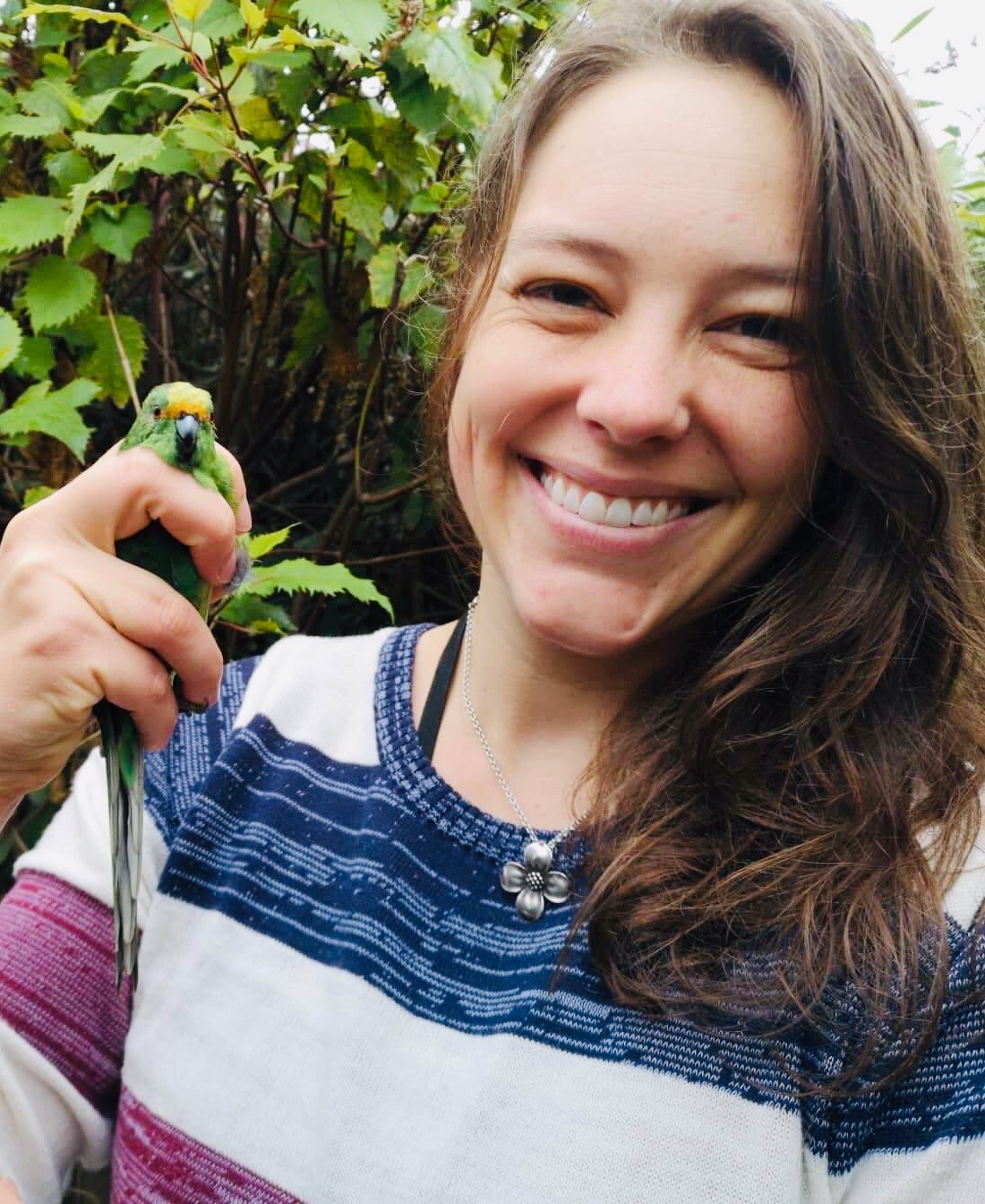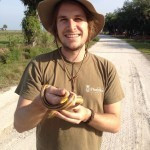
 |
Cinnamon Mittan (President) Cinnamon is a PhD student in Dr. Kellly Zaumudio's lab in the department of Ecology and Evolutionary Biology at Cornell University. She uses a combination of genomics, experiments, and field observations to understand population dynamics, survival and adaptation at species range limits. She uses Rhinella marina, the invasive cane toad, as a model system, but is broadly interested how these forces determine survival in marginal habitats for any species, particularly amphibians. |
 |
Mariah Meek (Vice-President) Mariah is an Assistant Professor in the Department of Integrative Biology at Michigan State University. Mariah is a conservation biologist and molecular ecologist, interested in understanding the ecological and evolutionary processes that generate and maintain diversity within and among populations. The primary motivation for her work is to apply this fundamental understanding of biology to solve pressing problems in conservation and management. |
 |
Stephanie Galla (Treasurer) Stephanie is a postdoctoral researcher at Boise State University, whose research interests center around the incorporation of genomic information into conservation management and policy. She recently earned her PhD at the University of Canterbury (Aotearoa/New Zealand) where she worked with conservation managers to incorporate genomics into pairing decisions for critically endangered birds. At her current position, Stephanie is using a combination of genomic technologies and agent-based models to investigate the genetic underpinnings of adaptive capacity to climate change in sagebrush (Artemesia tridentata) and American Kestrels (Falco sparverius) to forecast how these species may respond to a changing world |
 |
Sophia von der Heyden (Secretary) Sophie is a marine molecular ecologist. Her research is by necessity broad, but primarily focuses on the conservation and sustainable utilisation of species and the marine environment. Her particular interests lie in the applicability of molecular ecological and genomics tools to inform marine spatial planning, understanding MPA connectivity patterns and resilience and adaptation of marine species to ongoing and future change, as well as the impacts of changing marine communities on society. |
 |
Brenna Forester (Chair: Strategic Planning) Brenna is a David H. Smith Conservation Research Fellow based at Colorado State University. She is a landscape and molecular ecologist focused on conserving biodiversity in a period of rapid global change. Her research integrates spatial, environmental, genomic, and phenotypic data sets to assess adaptive capacity and inform the management of threatened species. Her current work focuses on amphibian conservation and developing best practices for the use of genomic data in U.S. Endangered Species Act decision-making. |
 |
Soraia Barbosa (Co-Chair: Education and Events, founding President, 2015 -2019) Soraia is a conservation geneticist with a PhD in biodiversity, genetic and evolution from Porto University. Soraia's interests relate to animal conservation, especially by understanding and counteracting the processes leading to species endangerment. Her research focuses on the use of genetic and genomic tools for small mammal conservation, while promoting the use of non-invasive samples, and it relies on the study of species phylogeny, phylogeography, and population and landscape genetics to understand how species genetic diversity varies in both space and time. Her main focus is to develop conservation guidelines informed by genetic evidence for better informed conservation planning. |
 |
Nick Fletcher (Co-Chair: Education and Events, founding Secretary, 2015-2019) Nick is a PhD candidate in Dr. Jeremy Searle's lab in the Department of Ecology and Evolutionary Biology at Cornell University. He is broadly interested in using genomic tools to understand questions in evolutionary biology and conservation. His thesis addresses how isolation during glacial cycles can drive speciation, the use of genomics for biodiversity discovery, as well as understanding the genomic signatures of inbreeding in small insular populations. He currently works on the field vole (Microtus agrestis) as a model system for these questions, but is interested in applying conservation genomics techniques to a wide variety of taxa. |